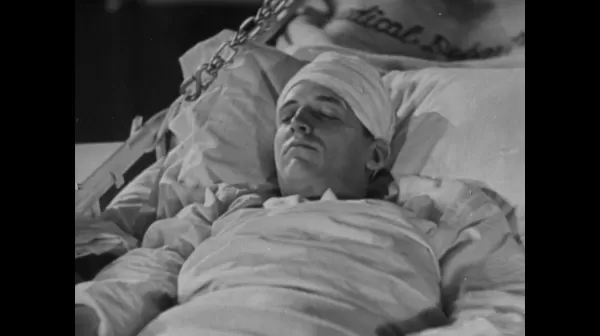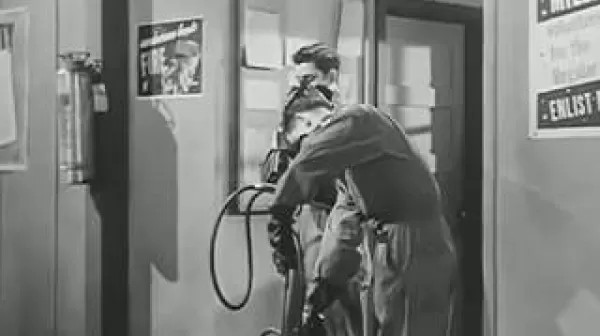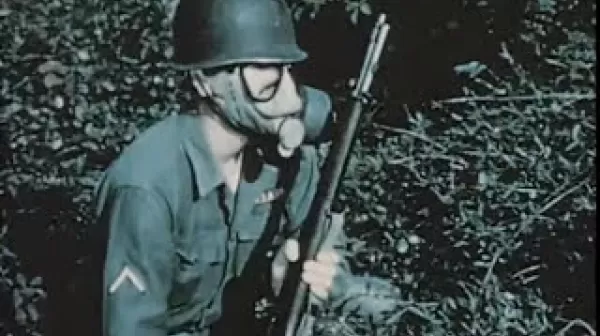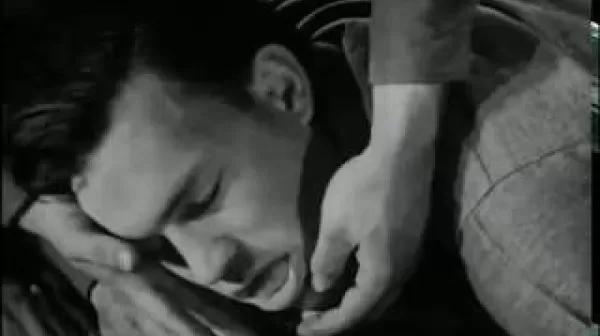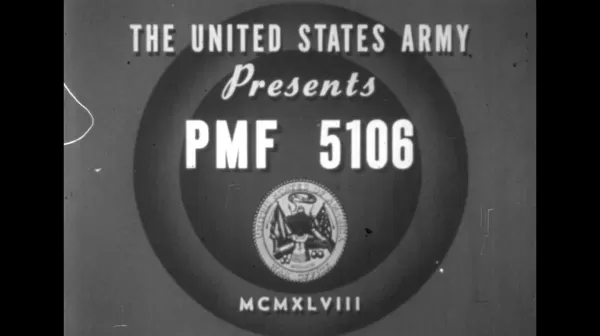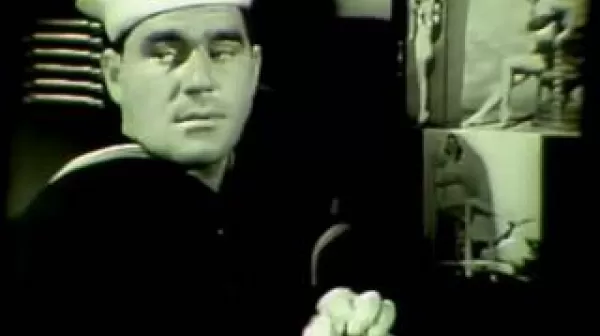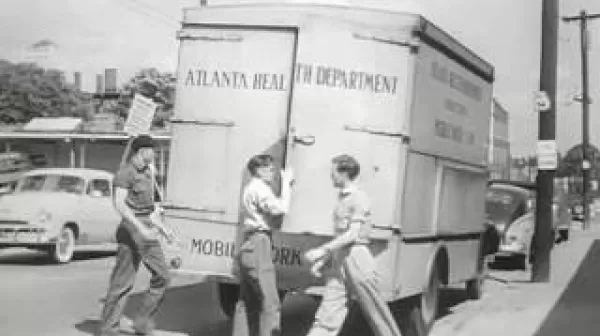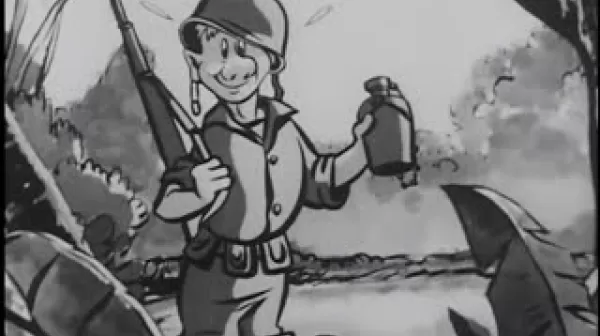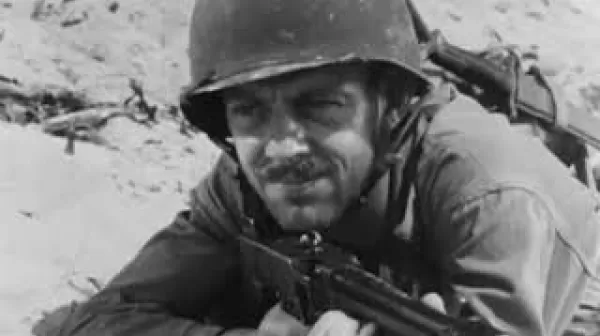Evening Care (US Navy/US Army, 1943)
Part of the U.S. military's "Care of the Sick and Injured" series, this film offers instructions for Navy medical corpsmen on how to provide evening care to their fellow sailors recovering in the sick bay of a ship. Narration takes place over footage of corpsmen doing the following: washing patients, giving a back rub, checking for pressure sores, tidying beds, giving individual care, and completing records.
DDT in Control of Household Insects (U.S. War Department, 1947)
This film outlines the control of household insects in military establishments. Flies, roaches, and bedbugs can be controlled by good sanitation and the use of DDT. The equipment and techniques to be used are shown. Identification of presence of pests is discussed. Treatment of barracks, kitchens, and mess halls is shown. NLM Unique ID: 9432127 Learn more about the National Library of Medicine's historical audiovisuals program at: https://www.nlm.nih.gov/hmd/collections/films
Vulnerability to Covert Attack (U.S. Army Chemical Corps, 1959)
This film describes the vulnerability of population centers to covert biological warfare, identifying ways in which nerve gas or other agents could be unleashed on a populated area. The physiological effects of nerve gas and psychochemicals such as LSD on animals and humans are shown, with extensive footage of live animal experiments using rabbits, cats, and goats in open areas (a trench) and closed vehicles (a tank). Soldiers are shown attempting to march in formation before and after ingesting LSD.
First Aid for Non-Battle Injuries (US Army, 1943)
In this film, the elementary principles of first aid for soldiers in the field are presented. The emphasis is on what the soldier should do before medical help arrives. He is shown how to put everyday objects and personal items to good use in emergency situations. The film is narrated over footage of soldiers in the field.
Medical Service of the Finnish Armed Forces in the Winter: Paper in the Care of Casualties (1948)
his film is an English language version of a captured German film that describes the uses of paper products by the Finnish armed forces in protecting their wounded from freezing during initial treatment and evacuation. Paper proved to be good protection against wind and cold, it was inexpensive, fairly strong, and it could be used repeatedly. The film consists of footage of troops dressed in white cold-weather gear fighting in snow-covered terrain and of corpsmen caring for the wounded and demonstrating the uses of paper products.
For Which We Stand (United States Navy, 1950)
In this film, servicemen are strongly urged to forgo illicit and casual sex because it is degrading and contrary to divine will. The joys of marriage and family are stressed. Long-term happiness should be the goal, not immediate gratification. A medical officer discusses sexual abstinence, saying that it will not adversely affect a man's virility. A commanding officer points out that sexual promiscuity among troops is not just the concern of the medical officer and the chaplain. He says that self-control should be practiced by everyone.
Cleaning Mess Gear (US Navy, 1945)
The importance of keeping field mess gear clean and how that should be done properly in the field are presented in humorous cartoon animation. The consequences of using dirty mess gear are shown. The film is aimed at U.S. Marines. The locale is a jungle. Produced by Hugh Harman Productions for the United States Navy.
Practical Rat Control: Ratproofing (U.S. Army and CDC, 1950)
This film presents in detail the aspects of design, fabrication, and installation of building materials so that rats are denied access to structures whether through doors, windows, basements, or roof areas. Learn more about this film and search its transcript at NLM Digital Collections: http://resource.nlm.nih.gov/9423676. Learn more about the National Library of Medicine's historical audiovisuals program at: https://www.nlm.nih.gov/hmd/collections/films
Drinking Water (US Navy, 1945)
A United States Navy training film In humorous animated cartoon format, the soldier is instructed to drink only water from safe supplies. The consequences of not rationing one's individual water supply when away from camp are shown. The dangers of drinking from untreated water supplies are shown. The locale is the Asian jungle; the enemy is Japan. Film aimed at marines engaged in jungle warfare.
Introduction to Combat Fatigue (US Navy, 1944)
This formerly restricted film was intended to be shown to patients suffering from combat fatigue. A medical officer/narrator explains the nature of fear and how it helps the body and mind cope with threatening situations. Profiling a soldier named Edwards, the narrator explains how combat fatigue begins, grows, and finally incapacitates the soldier. Aboard a ship headed for the combat zone, Edwards feels excitement and tension. In the combat zone, he behaves as expected -- he leaves his ship, wades ashore, penetrates a jungle area, and fires at the enemy. He is afraid but not cowardly.

